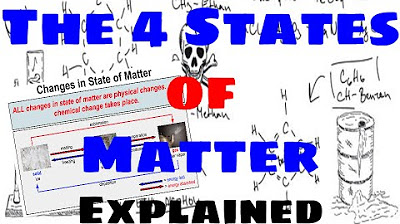APES Notes 1.7 - Hydrologic (Water) Cycle
Summary
TLDRIn this educational video, Mr. Smeeds explores the hydrologic cycle, detailing how water transitions between solid, liquid, and gas states, and moves between various reservoirs such as the atmosphere, bodies of water, and underground aquifers. Key processes like evaporation, transpiration, and precipitation are explained, emphasizing the sun's role in driving the cycle. The importance of understanding these processes for human use of freshwater is highlighted, along with the environmental implications of runoff and infiltration.
Takeaways
- 🌊 The hydrologic cycle, also known as the water cycle, involves the movement of water in different states between various sources and reservoirs.
- 💧 Water's state of matter, whether solid, liquid, or gas, is crucial in understanding its movement within the cycle.
- 🌤️ Precipitation, such as rain, represents water transitioning from a gaseous state in the atmosphere to a liquid state on Earth's surface.
- 🌍 The hydrologic cycle is driven by solar energy, which causes water to evaporate from bodies of water and transpire from plants.
- 🌊 The largest reservoir of water on Earth is the ocean, while smaller but significant freshwater reservoirs include polar ice caps, glaciers, and groundwater.
- 🌿 Transpiration is the process by which plants draw water from the ground and release it into the atmosphere through stomata in their leaves.
- 🌡️ Evapotranspiration is the combined process of evaporation and transpiration, representing the total water vapor released into the atmosphere from an ecosystem.
- 💧 Runoff occurs when precipitation flows over the Earth's surface and eventually reaches bodies of water, contributing to surface water reservoirs.
- 🌱 Infiltration is the process where water from precipitation soaks into the ground, replenishing aquifers and groundwater supplies.
- 🌳 The permeability of the ground cover significantly affects the amount of water that can infiltrate and recharge groundwater reservoirs.
Q & A
What is the hydrologic cycle?
-The hydrologic cycle is the movement of water in different states between various sources and reservoirs, driven by energy from the sun.
How does precipitation relate to the hydrologic cycle?
-Precipitation is a part of the hydrologic cycle where water in the atmosphere condenses into clouds and falls back to Earth as liquid, moving from the atmospheric reservoir to the surface water or groundwater reservoirs.
What are the two key reservoirs water might move to after precipitation?
-After precipitation, water might move to surface water bodies or infiltrate into the ground to become groundwater.
What is the role of the sun in the hydrologic cycle?
-The sun provides the energy necessary to drive the hydrologic cycle, particularly in processes like evaporation, where it warms water bodies causing water to evaporate and enter the atmosphere as a gas.
What is the largest reservoir of water on Earth?
-The largest reservoir of water on Earth is the ocean.
Why are polar ice caps, glaciers, and groundwater important?
-Polar ice caps, glaciers, and groundwater are important because they are significant freshwater sources that humans can use for agriculture and drinking, unlike the saltwater from the ocean.
What is transpiration and how does it relate to the hydrologic cycle?
-Transpiration is the process where plants draw water from the ground via their roots and release it as water vapor through their leaves, contributing to the water cycle by moving water from the liquid state on Earth to the gaseous state in the atmosphere.
What is evapotranspiration and how does it contribute to the water cycle?
-Evapotranspiration is the sum of water lost to the atmosphere from both evaporation and transpiration. It represents the total amount of water that leaves an ecosystem in the form of water vapor, driven by the sun's energy.
What are the two possible outcomes for precipitation when it reaches the Earth's surface?
-When precipitation reaches the Earth's surface, it can either flow across the surface as runoff into a body of water or it can infiltrate into the ground and become part of the groundwater.
How does the permeability of the ground cover affect groundwater recharge?
-The permeability of the ground cover affects groundwater recharge by determining how easily water can infiltrate the soil and reach underground aquifers. More permeable surfaces, like those covered by grass and soil, allow for greater infiltration and recharge of groundwater.
Why is runoff important for human use, but also a potential problem?
-Runoff is important for human use because it replenishes surface bodies of water, which are crucial for drinking and agriculture. However, it can also be a problem because as it flows over the surface, it can pick up pollutants, which then get carried into water bodies, potentially causing environmental and health issues.
Outlines

This section is available to paid users only. Please upgrade to access this part.
Upgrade NowMindmap

This section is available to paid users only. Please upgrade to access this part.
Upgrade NowKeywords

This section is available to paid users only. Please upgrade to access this part.
Upgrade NowHighlights

This section is available to paid users only. Please upgrade to access this part.
Upgrade NowTranscripts

This section is available to paid users only. Please upgrade to access this part.
Upgrade NowBrowse More Related Video

The Four States of Matter - Explained

Lab Equipment - Explained

3. Gr 11 Life Sciences - Population Ecology - Theory 3 Mark Recapture Method

4. Gr 11 Life Sciences - Population Ecology - Worksheet 1

PENJASKES KELAS X - SOFTBALL

Introduction to Culture [AP Human Geography Review Unit 3 Topic 1]

Menentukan Mr ( massa molekul relatif )
5.0 / 5 (0 votes)